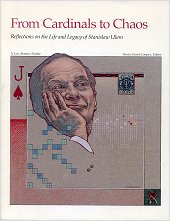This lively well-illustrated collection of articles written by a group of particle physicists at Los Alamos National Laboratory
presents to the expert and non-expert alike a comprehensive overview of the major theoretical and experimental advances of the past twenty years.
It explains the emergence of a profoundly new understanding of the fundamental forces of Nature.
With the unification of the weak and electromagnetic interaction, physicists now stand at the brink of a complete unification of all the forces, including gravity.
This achievement brought with it a rich new vocabulary of names and concepts:
quarks, gluons, nonabelian gauge theories, spontaneous symmetry breaking, supersymmetry, strings, and worlds of ten dimensions.
The exposition of these ideas, done on a variety of technical levels, is designed to interest a broad audience
ranging from the professional theorist and experimentalist t0 the inquisitive student.
Even a layman can enjoy this book.
It includes theoretical discussions of scaling, the renormalization group, the standard model which encompasses the
electroweak theory and quantum chromodynamics, grand unified theories including supersymmetry, superstrings and the family problem.
The experimental articles focus on tests of the standard model, underground experiments, and accelerator developments including plans for the SSC.
The volume closes with a provocative round table discussion among workers in the field that gives a broad perspective as well as personal viewpoints.

